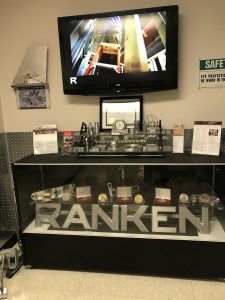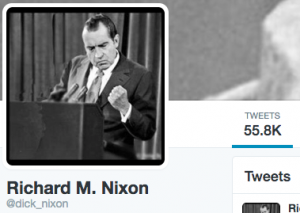
The latest domain-based scam depends on you not noticing the difference between ɢoogle.com and Google.com. Look closely, and note that first “g” looks a bit off between the two samples. This is because this domain name is using Latin characters (as shown from the Wikipedia entry above with all those K’s). Thanks to Unicode alphabet support in domain names (which makes Chinese and Hebrew and other non-Roman lettered domains possible), scammers are registering these near-typo-squatted domains to fool users into clicking on them. This also makes it harder for IT security folks to keep malware hosted on these domains from infecting their networks. This particular domain was registered to an alleged Russian criminal called Vitaly Popov. He also owns the domain lifehacĸer.com. (Note the odd “k” there.)
Needless to say, the legit owners of these domains have filed legal disputes, claiming that users would be confused and at peril.
 This isn’t the only challenge for users of the domain name system. I recently explored registering a new domain name. Given that the old standbys such as .com and .net are usually taken for the most common names, the Internet authorities now have opened up dozens of new extensions to choose from such as .camera and .kitchen (see the screenshot here) that I could use. In fact, there are far too many choices. I guess this was inevitable.
This isn’t the only challenge for users of the domain name system. I recently explored registering a new domain name. Given that the old standbys such as .com and .net are usually taken for the most common names, the Internet authorities now have opened up dozens of new extensions to choose from such as .camera and .kitchen (see the screenshot here) that I could use. In fact, there are far too many choices. I guess this was inevitable.
But my surprise wasn’t just at the sheer number of them, but their excessive cost: some of these extensions will set you back hundreds of dollars a year. And that is just for the registration of the name, let alone putting up a website for that domain. While many domains now get sold through brokers for higher fees, this is the just the initial retail cost from a registrar. This makes it a lot harder for brands to know what to purchase, and it could up the ante if they are startups who will have to purchase multiple names to register their brand.
 Remember those halcyon days of Pets.com and its spokes-puppet? Seems like a long time ago.
Remember those halcyon days of Pets.com and its spokes-puppet? Seems like a long time ago.
 Both Paul and I have known Sam Whitmore since all three were at PC Week (now eWeek) back in the go-go 1980s. Since 1998, Sam has been running his own consultancy for PR firms, called
Both Paul and I have known Sam Whitmore since all three were at PC Week (now eWeek) back in the go-go 1980s. Since 1998, Sam has been running his own consultancy for PR firms, called  This week we cover a grab bag of stories dealing with B2B marketing, some good and some bad. We look a why Medium.com failed to deliver revenue, blaming this failure on its advertising model. The
This week we cover a grab bag of stories dealing with B2B marketing, some good and some bad. We look a why Medium.com failed to deliver revenue, blaming this failure on its advertising model. The 




 Grant Gross’ excellent story in CIO.com
Grant Gross’ excellent story in CIO.com
 We talk today with
We talk today with